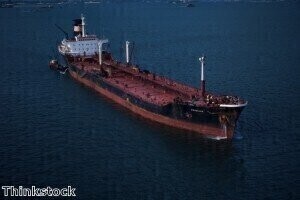Environmental laboratory
UN rushes to prevent Yemen oil tanker spilling environmental pollutants
Jul 21 2023
A specter of environmental disaster looms in the Red Sea, where an aging supertanker, laden with over a million barrels of crude oil, sits neglected off the coast of Yemen. Abandoned since 2015 amid the upheaval of civil war, the tanker threatens not only to wreak ecological havoc on an unprecedented scale but also to cause a humanitarian catastrophe.
The supertanker, christened 'Safer,' has been stranded approximately 19 miles northwest of Hodeida city for nearly a decade. In the aftermath of Yemen's descent into civil war, the ship's maintenance was left undone, leading to the vessel's alarming dilapidation. The international community's attention is now turned to this ghost ship, teetering on the edge of explosion, threatening to unleash an oil spill four times as disastrous as the 1989 Exxon Valdez disaster in Alaska.
This looming crisis has finally spurred the United Nations (UN) into action. After a prolonged struggle to secure access and the necessary funding, the UN has initiated a salvage mission with an estimated budget of €120 million. This enormous task includes purchasing a secondary tanker, named Nautica, to transfer the crude oil stored within Safer. A technical salvage boat arrived at the site in late May, marking the commencement of the intricate four to six-week operation to prevent an environmental disaster.
David Gressly, the UN coordinator for Yemen, expressed relief at the operation's commencement, stating, "We're very happy to be on site where we can start the work." However, the challenges are daunting. The Safer, a vessel constructed in the 1970s and sold to Yemen in the 1980s, is in a perilous state. Experts suggest that it is at risk of disintegration, combustion, or catching fire, all of which present substantial environmental and humanitarian threats.
The potential consequences of an oil spill are dire. A large-scale spill could obliterate fishing communities along Yemen's Red Sea coast, destroying nearly 200,000 livelihoods overnight and exposing entire communities to life-threatening toxins. Millions would be subjected to severe air pollution, and the Red Sea's vital marine ecosystems, including coral reefs and mangroves, could suffer devastating damage. In addition, crucial ports like Hodeidah and Saleef would have to shut down, cutting off a vital lifeline for the war-ravaged nation, where approximately 17 million people rely on food assistance. The consequences wouldn't stop at Yemen's borders either. The oil could reach the African coast, impacting numerous nations bordering the Red Sea.
To counter this imminent disaster, several countries, including the UK, France, Italy, Luxembourg, Malta, and Norway, have rallied in support of the UN's mission. The complex operation is entrusted to SMIT Salvage, a renowned salvage company. The plan involves pumping the oil from the Safer to the newly acquired Nautica, followed by the towing and scrapping of the now-empty Safer.
The Nautica's support vessel, NDeavor, has begun crucial preparatory work. The first steps involve pumping an inert gas to replace the atmospheric oxygen within the Safer's oil chambers. This procedure is essential as previous inspection reports indicated damage to the Safer's engine compartment, rust-covered parts, and leakage of the inert gas preventing the accumulation of flammable gases within the tanks.
Achim Steiner, head of the United Nations Development Programme (UNDP), stressed the operation's significance, stating, "With the arrival of the NDeavor next to the Safer in the Red Sea, we truly have reached a critical milestone." If all goes as planned, the hazardous phase of transferring oil could be completed by early July.
The Safer's history is intertwined with Yemen's tumultuous past. Acquired by Yemen's government in the 1980s, the Safer could store up to 3 million barrels of oil from fields in Marib, a province in central Yemen. But with the eruption of the civil war in 2014 and the subsequent exile of the recognized government, the vessel fell into neglect.
As the international community races to prevent an ecological calamity, the Safer's plight serves as a stark reminder of the interplay between human conflicts and environmental safety. The long-term success of the mission, however, depends on a harmonious convergence of international cooperation, technical expertise, and stable on-ground conditions. While the risks are high, the cost of inaction is far higher, necessitating urgent action to secure the Safer and protect the environment and livelihoods of millions.
Digital Edition
AET 28.4 Oct/Nov 2024
November 2024
Gas Detection - Go from lagging to leading: why investment in gas detection makes sense Air Monitoring - Swirl and vortex meters will aid green hydrogen production - Beyond the Stack: Emi...
View all digital editions
Events
Jan 12 2025 Abu Dhabi, UAE
Jan 14 2025 Abu Dhabi, UAE
Jan 20 2025 San Diego, CA, USA
Carrefour des Gestions Locales de L'eau
Jan 22 2025 Rennes, France
Safety, Health & Wellbeing LIVE
Jan 22 2025 Manchester, UK



















